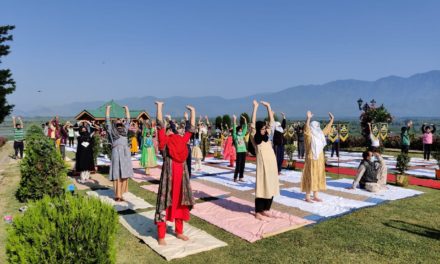![]()
New Delhi, Mar 27: Increase in maternal education in India is associated with reduction in preventable deaths in children under the age of five, according to a study.
The research, published in the journal Health & Place, is the first to explore the relationship between maternal education and children’s health in the rural-urban context in India.
“Understanding how education affects under-five mortality is crucial for understanding future population dynamics in developing countries,” said study corrosponding author, Samir K.C from the International Institute for Applied Systems Analysis (IIASA), Austria.
The researchers analysed five rounds of the Indian National Family Health Survey (NFHS I-V) conducted between 1992 to 1993, and 2019 to 2021.
The under-five mortality rate was calculated using data from a questionnaire, which collected detailed information about birth history data among women, especially the date of birth and survival status of each live birth, and the age at death of each deceased live birth.
The questionnaire also provided additional information such as age, education, religion, caste, and reproductive behaviours.
The data gathered was then fed into a computer model to analyse predictors of under-five mortality.
The results show that under-five mortality remained higher in rural India across the five study surveys, which may be attributed to poor socioeconomic and healthcare conditions that prevailed there.
However, after controlling for socioeconomic and maternal health predictors, the earlier surveys show a higher risk of under-five deaths in urban areas that have converged in recent years, resulting in no significant difference between rural and urban areas, the researchers said.
Increasing maternal education, and especially secondary education, was found to reduce the risk of under-five deaths across the surveys, they said.
“In recent years, there have been no significant differences in the under-five mortality rate of children born to mothers with an education level below- or at the primary level, but we know that in the past, the impact of maternal education on mortality differed between rural and urban areas,” said study co-author Moradhvaj, who is also from IIASA.
“We found that women with a secondary education living in urban areas, experienced lower child mortality than their rural counterparts with a similar level of education. We did, however, not find the same effect in the most recent surveys,” Moradhvaj explained.
Overall, maternal education, particularly secondary education, remained a protective factor for under-five mortality in both rural and urban areas, even after controlling for predictors, the researchers concluded.
“While current policies seem to be on the right track, it will be important to increase the educational opportunities in rural and urban areas with a particular focus on secondary education for girls to ensure that we keep up the decline in the under-five mortality rate in both rural and urban areas in India,” K.C. added.–(PTI)

























